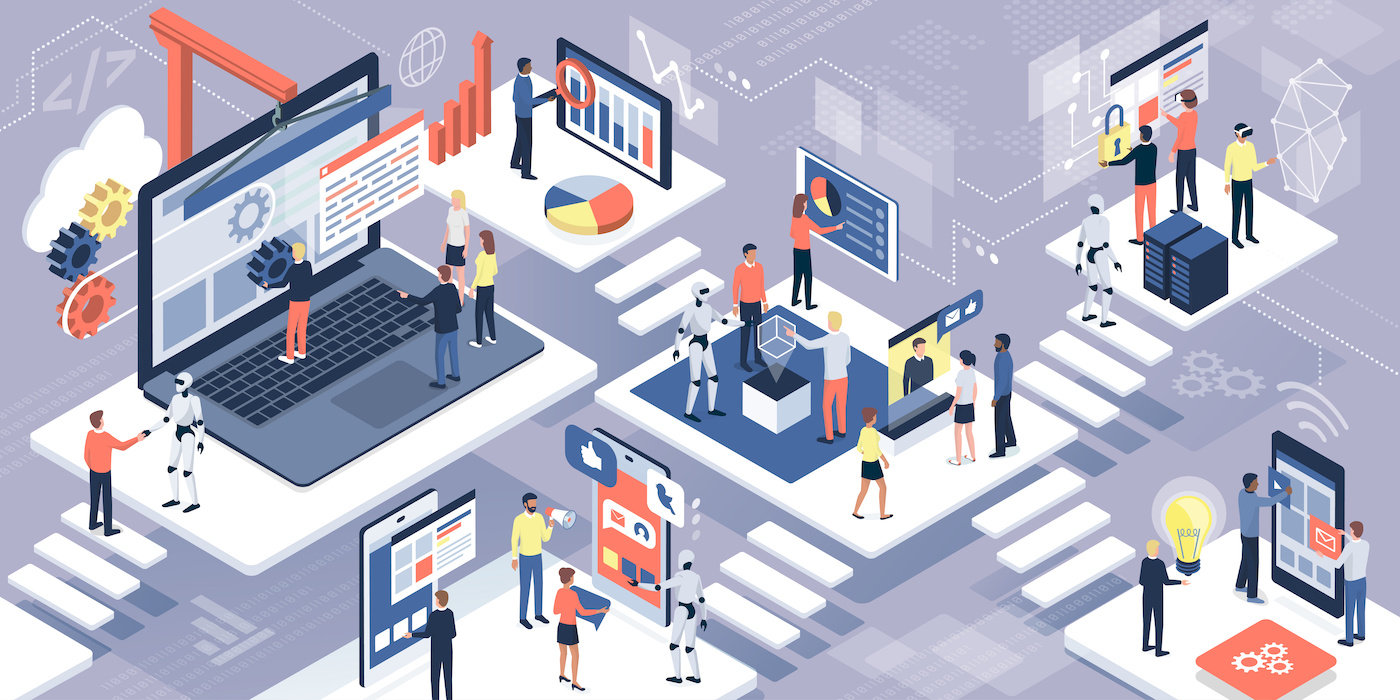Blog Details

Apr-2021
ITSM And AISM Exchange
Today, employees desire a greater sense of self-sufficiency, especially in light of the technological advancements sweeping across the globe. These workers want firms to give them the necessary tools, equipment, and solutions to achieve this. In addition, employees feel that more personalized means of interacting will be crucial to their overall productivity.
Firms must respond by providing automated knowledge management solutions that entail using, sharing, and managing organizational information to address these concerns. In essence, these knowledge management solutions will be crucial in enabling the firm's goals to be achieved.
Looking at working culture pre-Covid and past Covid, the working experience has dramatically been transformed into digital means of operation. In addition, work-from-home programs have become the norm. Remote employees enjoy shorter commutes, flexible work hours, and reduced costs (no need to wear official clothes).
However, there are still challenges facing firms. For example, IT teams saw the need to develop new plans that cater to the growing remote work—forcing the digital transformation processes that were to be complete in several years to be done successfully in a few months.
Back to the workers, they were also required to embrace and learn all the workings of vital tools such as Slack, Teams, and Zoom. These tools are integral to the success of remote work programs. This is where ITSM (IT service management system) comes in handy. This strategic approach entails designing, delivering, managing, and improving how firms use information technology (IT).
ITSM includes all processes and activities that support a specific service throughout the lifecycle of this particular service. ITSM involves service management, change management, problem management, asset management, and knowledge management. ITSM provides many benefits that include:
· Business-IT alignment
· More predictable IT performance and costs
· Continual improvement in respect to IT effectiveness and capabilities
The ITSM framework, therefore, allows firms to direct more time to develop the best strategic initiatives. These are the processes involved in ITSM;
1) Change management
This involves modifying services that are not aligned with the expectations of the business. IT establishes how these modifications will affect the delivery of the service, supports the implementation of these changes, and monitors the impact of the changes.
2) Asset management
Usually, services need both software and hardware to function the way they are expected to. These hardware and software must be tracked, updated, and mapped out to show how they interact. Asset management works in conjunction with configuration management and capacity management.
3) Project management
IT services are crucial in creating the seamless flow of a project from the beginning of the lifecycle to the end. IT helps a firm avoid outdated systems, shadow IT, and maintain orderly services.
4) Incident management
The IT service is at the forefront of addressing performance disruption issues and outages. They enable the firm to restore service availability, make the necessary improvements, and "codify" best practices to prevent the reoccurrence of unfortunate events.
What are some of ITSM's software and tools?
ITSM software is crucial in improving the communication between service providers and clients. The software also manages the workflow of service delivery. Some of the essential tools that can make the ITSM model a success include:
- Axios Systems' assist
- ServiceNow
- BMC Remedy
So, how does the ITSM compare to the AISM framework?
The AISM (AI Service Management) applies artificial intelligence to IT service management (ITSM). The primary role of the AISM framework is to solve the challenges that exist within the ITSM approach. AISM mainly focuses on faster restoration of services, rapid innovation, proactive prevention, and the individual employee and customer experience.
An AISM solution aims to help organizations to meet their objectives and allow them to scale faster. AISM provides a unified and open platform that relies on automated actions and workflows for better efficiency.
AISM, therefore, helps improve efficiency through three core functions. These include:
1) Intelligent service automation
Here, the AISM model is involved in activities such as:
- Establishing patterns in aggregated data.
- Using advanced analytics to improve processes
- Conducting incident and root cause analysis
2) Core enterprise service management
Here, AISM helps firms to leverage knowledge management to achieve their objectives. It does this by capturing up-to-date and relevant information that firms can efficiently use through natural language processing (NLP) and intelligent interfaces. This is essential for firms that wish to expand their service management capabilities.
3) Agile DevOps enablement
AISM helps firms with a great desire to innovate faster than their rivals. These are firms whose objective is to deliver more services and features to their clients and employees. The insight resulting from the AISM strategy also benefits product teams, service owners, and site reliability engineering (SRE). Here, AISM leverages automation and analytics to detect anomalies, get insight from predictive trends, and optimize service quality.
With AISM, the future for IT, users, and clients will be faster and wiser.
Final Take Away
Firms that effectively capitalize on the high speed of digital transformations by integrating AISM technologies will realize the total value of their digital strategy. In addition, AISM will address any shortcomings present in the traditional ITSM framework and is the better alternative!
